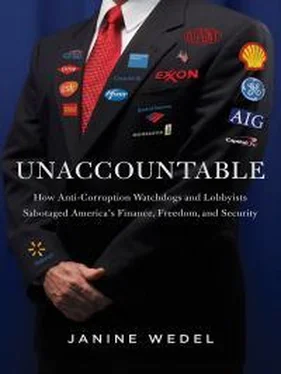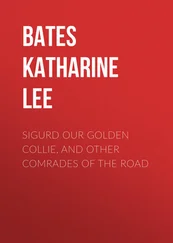Following a multiyear investigation, in 2000, the Justice Department had brought a $120 million fraud lawsuit against Harvard University and the Harvard principals in the USAID-funded project, Shleifer and Jonathan Hay (and their wives, later dismissed from the case). Justice alleged that Shleifer and Hay had been “using . . . inside information . . . influence . . . [and] USAID-funded resources, to advance . . . personal business interests and investments” (United States Attorney, District of Massachusetts, United States sues Harvard and others for false claims relating to USAID programs in Russia. Press release, United States Department of Justice, September, 26, 2000). The case culminated in 2005 with a negotiated settlement and the fee paid by Harvard a record one (David McClintick, “How Harvard Lost Russia.” Institutional Investor Magazine, Americas and International Editions, January 24, 2006, p. 3). Harvard was fined $26.5 million, Shleifer $2 million, and Hay between $1 and $2 million (Marcella Bombardieri, “Harvard, teacher, and lawyer to pay US$30m.” Boston Globe, August 4, 2005).
98. Andrei Shleifer and Daniel Treisman, “A normal country.” Foreign Affairs, March/April 2004 (www.foreignaffairs.org/20040301faessay83204/andreishleifer-daniel-treisman/a-normal-country.html).
99. Foreign Affairs declined to publish a letter to the editor making this point. The letter was coauthored by myself, the lead investigator from the Office of Inspector General of the U.S. Agency for International Development (Phil Rodokanakis), two former political officers from the U.S. embassy in Moscow (Donald Jensen and E. Wayne Merry), an eminent economist specializing in the Soviet and Russian economies (Steven Rosefielde), and a prominent political scientist (Peter Reddaway), also a specialist on Russian affairs. In response, Foreign Affairs told us that none of the Russia experts and economists they consulted with objected to Shleifer publishing the Shleifer article. Thus, in the midst of the U.S. government’s lawsuit against Harvard, Shleifer, and another Harvard principal, Foreign Affairs gave Shleifer a respected platform to legitimate his activities and thus his defense. At the very least, the magazine should have identified Shleifer’s involvements.
100. Economist Lambsdorff concluded as early as 2000 that, as a result of privatizing, “[c]orruption might just be shifted from the public to the private sector” (Johann G. Lambsdorff and Peter Cornelius, “Corruption, Foreign Investment, and Growth,” Klaus Schwab, Lisa D. Cook, Peter K. Cornelius, Jeffrey D. Sachs, Sara E. Sievers, and Andrew Warner, eds., The Africa Competitives Report 2000 /2001 (A Joint Publication of the World Economic Forum and the Institute for International Development, Harvard University ), pp. 70-78. Oxford: Oxford University Press, pp. 76-77).
101. Daniel Kaufmann, Aart Kraay, and Massimo Mastruzzi, “Measuring governance using cross-country perceptions data,” Susan Rose-Ackerman, ed., International Handbook on the Economics of Corruption . Cheltenham, U.K./Northampton, MA: Edward Elgar, 2006, p. 52.
102. World Bank, Anti-Corruption in Transition: A Contribution to the Policy Debate . Washington, D.C.: World Bank, 2000, p. xv.
Much work on state capture was devoted to business, such as “the efforts of firms to shape the laws, policies, and regulations of the state to their own advantage by providing illicit private gains to public officials,” as two World Bank authors put it (Joel Hellman and Daniel Kaufmann, “Confronting the challenge of state capture in transition economies.” Finance & Development , vol. 38, no. 3, September 2001, p. 1 [http://www.imf.org/external/pubs/ft/fandd/2001/09/hellman.htm]).
103. See, for example, Paul Krugman, “Crony Capitalism, U.S.A.” New York Times, January 15, 2002 (http://www.nytimes.com/2002/01/15/opinion/crony-capitalism-usa.html).
104. Steven Sampson, “The anti-corruption industry: from movement to institution.” Global Crime, vol. 11, issue 2, 2010, pp. 272-273.
105. See, for instance, economist Pranab Bardhan’s indictment of the CPI (Pranab Bardhan, “The Economist’s Approach to the Problem of Corruption.” World Development , vol. 34, no. 2, 2006, pp. 342-343).
Scholars such as Rose-Ackerman and Lambsdorff have acknowledged some limitations of cross-country statistical research (Susan Rose-Ackerman, ed., International Handbook on the Economics of Corruption . Cheltenham, U.K./Northampton, MA: Edward Elgar, 2006, p. xxiv; Johann G. Lambsdorff, “Causes and consequences of corruption: What do we know from a cross-section of countries?” International Handbook on the Economics of Corruption , op. cit., p. 42). These limitations include the fact that corruption that is clustered in different sectors can still produce similar rankings (when like sectors are not compared with like sectors). (Obviating this, Randi Ryterman and some other World Bank economists developed and deployed separate anti-corruption surveys for enterprises, households, and public officials. See, for instance, James Anderson, Corruption in Latvia: Survey Evidence. Washington, D.C.: World Bank, 1998.)
Among other limitations acknowledged: the perceptions of businesspeople (the basis for some indices) may be different from those of regular citizens. Some adverse practical implications that flow from the focus on metrics have also been acknowledged.
106. With regard to the state-of-the-art metrics, see the work of the European Research Centre for Anti-Corruption and State-Building (http://www.againstcorruption.eu/) (for instance, “14Mar Corruption Indicators, the Next Generation,” http://anticorrp.eu/news/corruption-indicators-the-next-generation/) and, specifically, the work of Alina Mungiu-Pippidi, director of the center. See also, for instance, Alina Mungiu-Pippidi, ed., Controlling Corruption in Europe. The Anticorruption Report. Volume 1. Berlin: Barbara Budrich Publisher, 2013 (http://anticorrp.eu/publications/a-comparative-assessment-of-regional-trends-and-aspects-related-to-control-of-corruption-in-the-middle-east-and-north-africa-asia-and-the-pacific-sub-saharan-africa-latin-america-and-the-caribbean/). See, too, the work of Alena V. Ledeneva (for instance, “Russia’s Practical Norms and Informal Governance: The Origins of Endemic Corruption,” Social Research , vol. 80, no. 4, Winter 2013, pp. 1135-1162.
107. Hans Krause Hansen, “The Power of Performance Indices in the Global Politics of Anti-Corruption,” Journal of International Relations and Development, vol. 15, no. 4, 2012, p. 510.
108. Ibid., pp. 455-465.
109. Ibid., pp. 506-531. Hansen adds: “. . . performance indices are not simply techniques of reporting about things, but are themseves a performative part of social action in general and of governmental and managerial action in particular” (p. 509).
CHAPTER 5
1. Research of anthropologist Hülya Demirdirek (as yet unpublished). A brief description appears here: Janine R. Wedel and Linda Keenan, “ Shadow Elite : Truthiness, Porn and the Real Problem With Reality TV.” Huffington Post, November 18, 2010 (http://www.huffingtonpost.com/janine-r-wedel/emshadow-eliteem-truthine_b_785258.html).
2. See, for example, David Rosen, “Is the internet killing the porn industry?” Salon, May 30, 2013 (http://www.salon.com/2013/05/30/is_success_killing_the_porn_industry_partner/).
3. See: National Security Agency, “Commitment” (http://www.nsa.gov/commitment/index.shtml).
4. Consider, for instance, that “In 1984 the number of companies owning a controlling interests [sic] in America’s media was 50—today that number is six” (http://www.pbs.org/moyers/moyersonamerica/net/timeline.html).
Читать дальше












